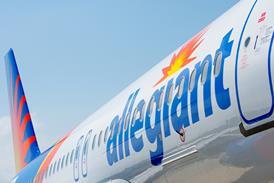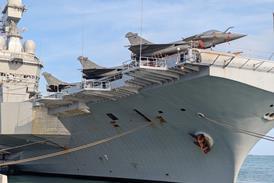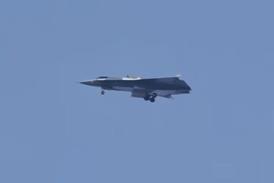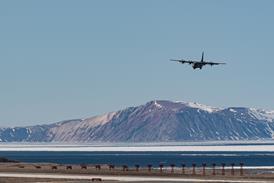Jamie Hunter
The US Marine Corps has announced that the Bell Boeing MV-22B Osprey Block B has achieved initial operational capability (IOC) and both the aircraft and the first combat squadron (Marine Medium Tiltrotor Squadron VMM-263, the ‘Thunder Chickens’) are now reported as being ready for expeditionary operations.
The news paves the way for the MV-22 to deploy to Iraq in September with ten aircraft as announced recently by Gen James T. Conway, commandant of the Marine Corps. In theatre the Ospreys will be used for a variety of roles from troop transport and re-supply to casualty evacuation.
The criteria for IOC included the initial operational readiness of VMM-263 with the requisite number of aircraft and equipment delivered to the squadron, final operational testing of the Block B combat configuration of MV-22B and the proving of the logistical support network to keep the aircraft ready for missions on deployment.
Test missions
Operational trials of the Block B configuration were conducted earlier this year by VMX-22, which logged 185 flight hours with four aircraft in just 18 days in the austere conditions of the western US desert. The test missions included assault raids, troop insertion, casualty evacuation, battlefield logistics, fast rope and personnel hoist operations, external lift of the M-777 Lightweight Howitzer, live fire of the M-240D ramp-mounted machine guns and 22 aerial refuellings.
Crews faced multiple ground threats day and night, to validate and refine the tactics, techniques and procedures for approaching objectives and reacting to threats.
Following VMM-263, VMM-162 and VMM-266 will be the Marines’ next MV-22 squadrons as the service looks to establish Osprey squadrons from former CH-46E units at a rate of about two per year, with an eventual fleet of 20 MV-22 squadrons. VMM-263 is home stationed at MCAS New River and it stood up as an Osprey unit on March 3, 2006.
The MV-22 is being improved in progressive stages, which started with Block A and from the 70th production MV-22, Block B became standard. This features new clamshell engine doors to enhance maintenance access, a retractable in-flight refuelling probe, winch hoist, avionics upgrades with digital maps, ramp-mounted gun and reliability and maintainability improvements. The first Block B aircraft was accepted by the US Marine Corps on December 8, 2005 and joined VMM-263.
The USAF is working towards operational testing of the CV-22 later this year. The 71st SOS at Kirtland will be joined by a second unit at Hurlburt Field and CV-22s will be further deployed with PACOM and EUCOM in the future.
Source: Flight Daily News























